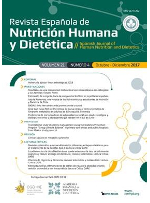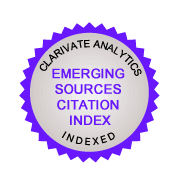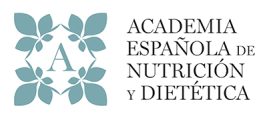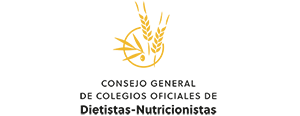The Relevance of the Technical Error of Measurement in Anthropometry: A Pilot Study from The Nutrifunction Project
DOI:
https://doi.org/10.14306/renhyd.29.1.2312Keywords:
Anthropometry, Reliability, intra-observer measurement error, Inter-observer measurement error, Technical error of measurementAbstract
Introduction. Anthropometry plays a crucial role in nutritional assessment, especially in clinical and research settings where lack of precision affects data reliability and patient care. However, the accuracy of these measurements is often overlooked when assessing nutritional status and health risks. This study aimed to assess the technical error of measurement (TEM) and evaluate the intra- and inter-observer measurement error of anthropometric measurements performed by the NutriFunction team—an ongoing multicentre study involving hospitalised patients and a comparative sample of community-dwelling individuals.
Methods. Six trained interviewers assessed twelve anthropometric indicators (body weight, body and knee height, hand and middle-finger lengths, hand breadth, mid-arm, waist, and calf circumferences, triceps, calf, and adductor pollicis thickness) on eight volunteers following ISAK and other pre-standardized techniques. TEM, relative TEM (%TEM), and coefficient of reliability (R) were calculated.
Results. Most results were adequate for experienced anthropometrists, except for hand breadth (%TEM=1.2) and knee height (%TEM=1.2) for anthropometrist #4, and middle-finger length (%TEM=1.3) for #5 in intra-observer variability (R range=0.6-1.0). Inter-observer variability showed unacceptable %TEM for hand length (%TEM=2.0, 2.5, 1.5) for anthropometrists #1, #2, and #5, hand breadth (%TEM=2.0) for #4, adductor pollicis thickness (%TEM=9.9, 14.5) for #1 and #2, and middle-finger length (%TEM=2.0) for #5 (R range: 0.3-1.0). For the beginner standard, intra-observer variability was acceptable across all points, but inter-observer variability was unacceptable for hand length (%TEM=2.5) and adductor pollicis thickness (%TEM=14.5) for anthropometrist #2.
Conclusions. Most anthropometric measurements had acceptable TEM values for experienced anthropometrists, meaning that these measurements present the necessary precision for clinical assessment and diagnosis. Anthropometrist #2 should not perform hand length and adductor pollicis thickness measurements until further training and a new TEM study are completed. Regular training is essential to minimise errors and safeguard the quality and clinical utility of anthropometric data for assessment, diagnosis and treatment.
Funding: Fellowship FCT (2023.01790.BD). and European Regional Development Fund (NORTE-01-0145-FEDER-000039).
References
Gibson RS. Principles of Nutritional Assessment: Oxford University Press; 2005.
Jelliffe DB, Jelliffe EFP. Community Nutritional Assessment: With Special Reference to Less Technically Developed Countries: Oxford University Press; 1989.
Ulijaszek SJ, Kerr DA. Anthropometric measurement error and the assessment of nutritional status. Br J Nutr. 1999;82(3):165-77.
Holmes CJ, Racette SB. The Utility of Body Composition Assessment in Nutrition and Clinical Practice: An Overview of Current Methodology. Nutrients. 2021;13(8):2493. 10.3390/nu13082493
Müller MJ, Braun W, Pourhassan M, Geisler C, Bosy-Westphal A. Application of standards and models in body composition analysis. Proc Nutr Soc. 2016;75(2):181-7. 10.1017/S0029665115004206
Norton K, Olds T. Anthropometrica. Sydney: University of New South Wales Press1996.
Hume P, Marfell-Jones M. The importance of accurate site location for skinfold measurement. J Sports Sci. 2008;26(12):1333-40. 10.1080/02640410802165707
Nádas J, Putz Z, Kolev G, Nagy S, Jermendy G. Intraobserver and interobserver variability of measuring waist circumference. Med Sci Monit. 2008;14(1):Cr15-8.
Scafoglieri A, Clarys JP, Cattrysse E, Bautmans I. Use of anthropometry for the prediction of regional body tissue distribution in adults: benefits and limitations in clinical practice. Aging Dis. 2014;5(6):373-93. 10.14366/AD.2014.0500373
Zubir S, Ikhwan MN, Abd. Rahman S, Hamadan H, Salim N, Haji Baruji THME, et al. Technical Error Measurements, Reliability, and Validity of Customized Anthropometric Grid. Journal of Occupational Safety and Health. 2023;20:51-8.
Hardy J, Kuter H, Campbell M, Canoy D. Reliability of anthropometric measurements in children with special needs. Arch Dis Child. 2018;103(8):757-62. 10.1136/archdischild-2017-314243
Carsley S, Parkin PC, Tu K, Pullenayegum E, Persaud N, Maguire JL, et al. Reliability of routinely collected anthropometric measurements in primary care. BMC Medical Research Methodology. 2019;19(1):84. 10.1186/s12874-019-0726-8
Madden AM, Smith S. Body composition and morphological assessment of nutritional status in adults: a review of anthropometric variables. J Hum Nutr Diet. 2016;29(1):7-25. 10.1111/jhn.12278
Frisancho AR. Anthropometric standards for the assessment of growth and nutritional status. Ann Arbor: University of Michigan Press; 1990. Available from: http://catalog.hathitrust.org/api/volumes/oclc/20932481.html.
Lohman TG, Roche AF, Martorell R. Anthropometric standardization reference manual. Champaign, IL: Human Kinetics Books; 1988.
Ulijaszek SJ, Mascie-Taylor CGN. Anthropometry: The Individual and the Population: Cambridge University Press; 1994.
Marks GC, Habicht JP, Mueller WH. Reliability, dependability, and precision of anthropometric measurements. The Second National Health and Nutrition Examination Survey 1976-1980. Am J Epidemiol. 1989;130(3):578-87.
Arroyo M, Freire M, Alday L, Pablo AM. Intraobserver error associated with anthropometric measurements made by dietitians. Nutr Hosp. 2010;25:1053-6.
Klipstein-Grobusch K, Georg T, Boeing H. Interviewer variability in anthropometric measurements and estimates of body composition. International journal of epidemiology. 1997;26 Suppl 1:S174-80.
F. Esparza-Ros, R. Vaqueri-Cristóbal, Marfell-Jones. M. International standards for anthropometric assessment, 2019th ed. Murcia, Spain: International Society for the Advancement of Kinanthropometry. 2019.
Lameu EB, Gerude MF, Campos AC, Luiz RR. The thickness of the adductor pollicis muscle reflects the muscle compartment and may be used as a new anthropometric parameter for nutritional assessment. Curr Opin Clin Nutr Metab Care. 2004;7(3):293-301.
ISO7250-1:2017. Basic Human Body Measurements for Technological Design—Part 1: Body Measurement Definitions and Landmarks. ISO/TC 159/SC 3 Anthropometry and Biomechanics.
Guerra RS, Fonseca I, Pichel F, Restivo MT, Amaral TF. Hand length as an alternative measurement of height. Eur J Clin Nutr. 2014;68(2):229-33.
Lee RD, Nieman DC. Nutritional assessment: McGraw-Hill Boston, MA, USA:; 2007.
Pereira PML, Neves FS, Bastos MG, Cândido APC. Adductor Pollicis Muscle Thickness for nutritional assessment: a systematic review. Rev Bras Enferm. 2018;71(6):3093-102.
Himes JH. Reliability of anthropometric methods and replicate measurements. Am J Phys Anthropol. 1989;79(1):77-80.
Gore C, Norton K, Olds T, Whittingham N, Birchall K, Clough M ea. Accreditation in anthropometry: an Australian model. In: Norton K, Olds T, editors, Anthropometrica. Sydney: University of New South Wales Press. 1996:p. 395–411.
Oliveira T, Oliveira G, Ornellas J, Oliveira F. Technical error of measurement in anthropometry (English version). Revista Brasileira de Medicina do Esporte. 2005;11:81-5.
Gonzalez MC, Duarte RR, Budziareck MB. Adductor pollicis muscle: reference values of its thickness in a healthy population. Clinical nutrition. 2010;29 2:268-71.
Weinberg SM, Scott NM, Neiswanger K, Marazita ML. Intraobserver error associated with measurements of the hand. Am J Hum Biol. 2005;17(3):368-71.
Kouchi M, Mochimaru M, Tsuzuki K, Yokoi T. Interobserver errors in anthropometry. J Hum Ergol (Tokyo). 1999;28(1-2):15-24.
Downloads
Published
How to Cite
Issue
Section
License
Copyright (c) 2020 Micaela Cunha Rodrigues, Rita Guerra, Adriana Souza, Rui Valdiviesso, Bruna Rosa, Mónica Rodrigues, Maria Luisa Lucena, Ana S. Sousa, Joana Mendes, Ana Rita Sousa Santos, Nuno Borges, Teresa Amaral

This work is licensed under a Creative Commons Attribution-NonCommercial-ShareAlike 4.0 International License.











